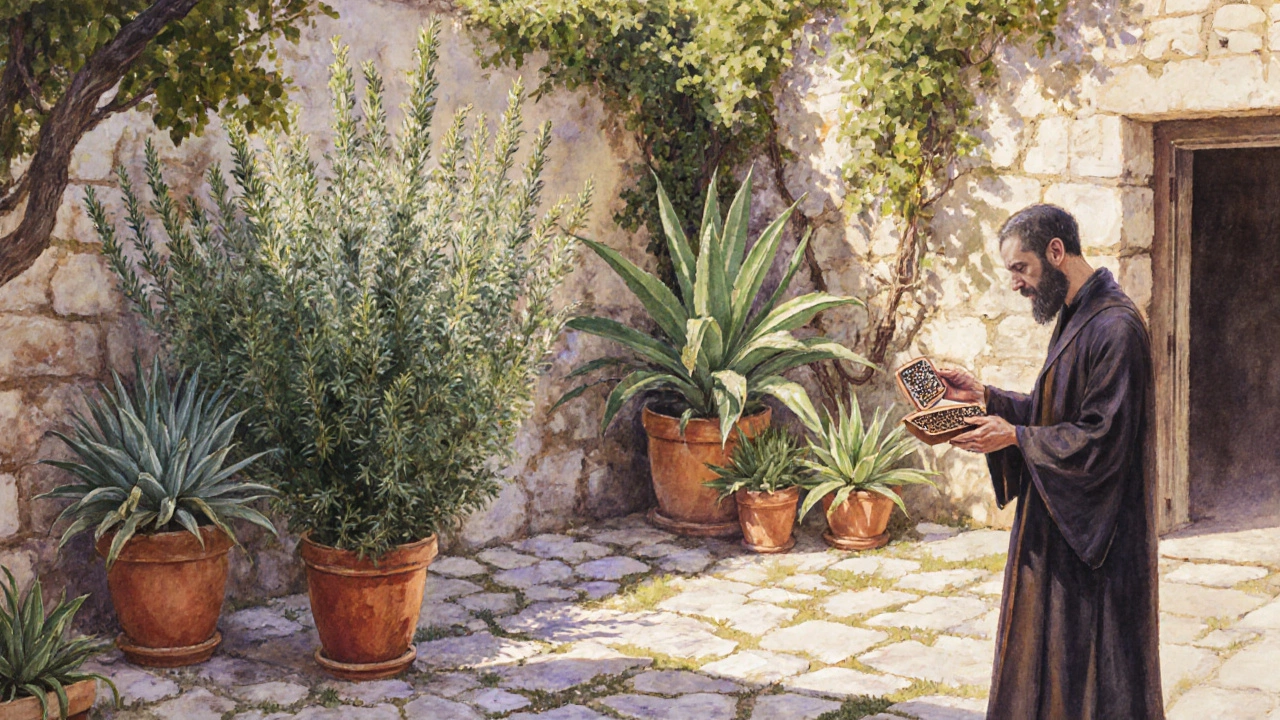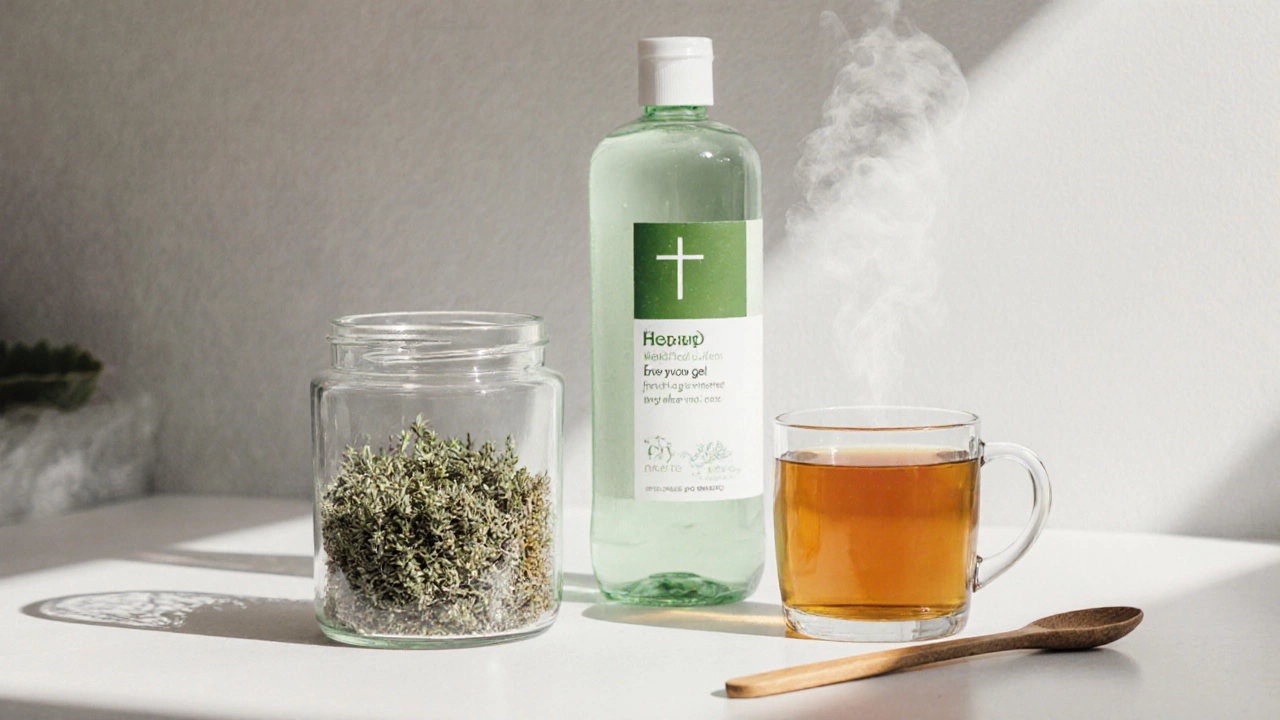Which herb did Jesus use? Exploring Biblical Herbs and Their Modern Uses
 Oct, 21 2025
Oct, 21 2025
Herb Interaction Checker
Check for Herb-Medication Interactions
This tool helps you determine if biblical herbs like hyssop or aloe vera may interact with your current medications or health conditions.
Ever wondered what herb Jesus used might have been? The Bible drops a few clues, but the ancient world’s plant names aren’t always a perfect match for today’s taxonomy. Let’s walk through the scriptures, archaeology, and modern herbal science to uncover the most likely candidates and how you can use them safely today.
What the Bible Says About Herbs
The Old Testament mentions a handful of plants in the context of worship, healing, and purification. For example, Hyssop is described as a cleansing twig (a small, aromatic shrub used in ritual washings) in Exodus 12:22 and Psalm 51:7. Another frequent reference is Aloe vera (a succulent prized for its soothing gel) noted in John 19:39 as part of the burial spices.
Other plants appear in liturgical formulas, such as Frankincense (a resin from Boswellia trees used in incense) and Myrrh (a bitter gum from Commiphora species) mentioned in the gifts of the Magi (Matthew 2:11). Though not herbs per se, they illustrate the cultural importance of plant‑based substances.
Likely Candidates That Jesus Might Have Used
Scholars narrow down the possibilities to a few plants that match the biblical descriptions, were available in Galilee, and had recognized medicinal actions.
- Hyssop - Used for ceremonial purification, it also has mild antiseptic properties. Ancient Jewish sources (Mishnah, Talmud) list it as a “cleaning herb.”
- Aloe vera - Valued for its soothing gel, it was part of burial rites but also mentioned in the Proverbs as a “plant of the field.” Modern studies show anti‑inflammatory effects.
- Galbanum - A gum resin, referenced in Exodus 30:34 as part of the holy incense blend. It has a sharp, bitter scent and was believed to ward off evil.
- Cinnamon - Though more exotic, it appears in Leviticus 2:13. It was traded via the Incense Route and used for its warming, antimicrobial qualities.
- Olive oil - While primarily a fat, it was often infused with herbs for anointing. The New Testament cites olive oil in the anointing of Jesus (Mark 14:3).
Out of this list, hyssop and aloe vera get the most scholarly attention as the true “herbs” Jesus could have physically handled.
Historical Context: Plant Life in First‑Century Judea
Archaeobotanical studies from sites like Qumran and Tel Dan have recovered pollen and carbonized seeds that confirm the presence of hyssop (Origanum syriacum) and aloe species in the region. The climate was Mediterranean‑dry, favoring hardy, aromatic shrubs that survived drought.
Trade routes along the Red Sea brought exotic resins like frankincense and myrrh, explaining their biblical prominence despite limited local growth. Meanwhile, local herb gardens attached to synagogues and households cultivated medicinal plants for everyday ailments.

Modern Herbal Supplement Perspective
Today, both hyssop and aloe are sold as extracts, teas, or topical gels. Here’s a quick snapshot of what the current science says.
| Attribute | Hyssop | Aloe Vera |
|---|---|---|
| Primary compounds | Pinocamphone, flavonoids | Aloe‑emodin, acemannan |
| Traditional use | Purification, mild cough relief | Skin soothing, digestive aid |
| Modern evidence | Antimicrobial, anti‑inflammatory (in vitro) | Wound healing, laxative effect (clinical) |
| Typical dosage | 1-2 g dried herb infusion / day | 30-100 ml gel or juice / day |
| Safety notes | High doses may cause seizures (rare) | Topical safe; oral may cause diarrhea |
Both herbs are generally regarded as safe when used in traditional amounts, but quality matters. Look for “organic,” “wild‑crafted,” or “certified GMP” labels to avoid contaminants.
Choosing a Quality Supplement
Here’s a short checklist you can run before buying any herbal product claiming to be the “herb Jesus used.”
- Verify the Latin botanical name on the label (e.g., Hyssopus officinalis or Aloe barbadensis Miller).
- Check for third‑party testing (e.g., USP, NSF).
- Prefer whole‑plant preparations over isolated extracts if you want the synergistic effect described in ancient texts.
- Read the storage instructions - many herbs lose potency when exposed to heat and light.
- Consult a qualified herbalist or medical professional, especially if you’re pregnant, nursing, or on medication.

Safety, Interactions, and Contra‑Indications
Even gentle herbs can cause problems. Hyssop contains thujone, a compound that can be neurotoxic at high doses. Aloe latex (the yellow sap) is a strong laxative and should be avoided if you have electrolyte issues.
Both herbs may interact with blood‑thinners (e.g., warfarin) because of mild antiplatelet effects. If you’re taking diabetes medication, aloe’s sugar‑lowering action could potentiate hypoglycemia.
Bottom line: start low, go slow, and keep a symptom diary for the first two weeks.
Quick Reference Cheat‑Sheet
- Hyssop: Purification, mild respiratory aid; dose 1‑2 g tea; watch for seizures at very high amounts.
- Aloe vera: Skin soothing, digestive support; dose 30‑100 ml gel; avoid latex if pregnant.
- Best sources: organic wild‑crafted, third‑party tested.
- Common pairings: combine hyssop tea with honey for throat comfort; aloe gel with vitamin C for skin repair.
Frequently Asked Questions
Did Jesus actually use hyssop?
The New Testament mentions hyssop in the context of cleansing (John 19:36). While the text does not describe Jesus personally handling the plant, cultural practices of the time make it highly probable that he was familiar with its use.
What is the difference between aloe leaf gel and aloe juice?
Aloe leaf gel is the clear, mucilaginous interior of the leaf, rich in polysaccharides for skin healing. Aloe juice contains the whole leaf, including the latex, which carries aloin - a potent laxative. For most supplement purposes, stick with pure gel.
Can I brew a tea with hyssop for daily use?
Yes. A typical preparation is 1 g dried hyssop steeped in 250 ml hot water for 5-10 minutes. Drink once a day, preferably after meals. Avoid exceeding 3 g per day to limit thujone exposure.
Are there any modern clinical trials on hyssop?
A few small‑scale studies in Europe have examined hyssop’s antimicrobial action against Staphylococcus aureus and its cough‑suppressing effect. Results are promising but not yet definitive, so treat it as a complementary herb rather than a primary treatment.
What other biblical herbs might be useful today?
Besides hyssop and aloe, plants like frankincense (anti‑inflammatory), myrrh (antiseptic), and galbanum (respiratory aid) still have modern extracts. Their efficacy varies, so consult a qualified practitioner before adding them to your regimen.